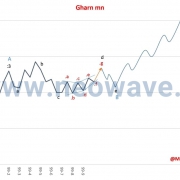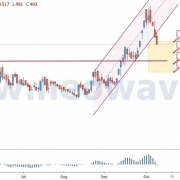(138) New Tips & Hints
You no longer use the term extracting triangle…why not?
ANSWER:
In the early 1990’s, soon after the release of Mastering Elliott Wave, a host of new patterns began to emerge (Diametrics, Symmetricals, 3rd Extension Terminals, and oddly shaped Triangles). Prior to the 1990’s, if you saw an expanding Triangle, wave-B was smaller in price than wave-D. When a contracting Triangle formed, wave-B was larger in price than wave-D.
That rigid behavior construct began to crumble in the 1990’s. If the environment started off with a large A-wave, instead of wave-B retracing at least 61% of wave-A, wave-B might retrace as little as 30% of wave-A and end up being shorter in price than wave-D. If the pattern started off with a small A-wave (suggesting an expanding Triangle), the reverse occurred. Wave-B might be much larger (138% of wave-A), followed by a D-wave that was much shorter in price than wave-C and shorter in price than wave-B. That behavior gave these patterns the appearance of EX-panding in one direction and con-TRACTING in the other (“extracting” was the term I coined by merging the two words).
At first I assumed these new Triangles were the result of Reverse Alternation between waves-B and D (a phenomenon previously only witnessed in Impulsive patterns between waves-2 and 4). While that was partially correct, over time it became apparent the situation was more complex. It took me a few years to fully understand, but as I studied more patterns, I was able to more logically categorize them.
In the same way 5-legged, Impulsive patterns have three main variations (i.e., 1st, 3rd and 5th extensions) with each able to possess standard or reverse alternation between waves-2 and 4, the same rules apply to 5-legged corrections (i.e., Triangles). If wave-A of a Triangle “extends” it is known as a contracting Triangle. If wave-C “extends” it forms what I termed a neutral Triangle. If wave-E “extends” it is known as an expanding Triangle.
With the addition of neutral Triangles I realized these patterns were not always expanding in one direction and contracting in the other, but sometimes “bulging” in the middle. That’s when I realized the term “extracting” was not accurate enough to describe the phenomenon unfolding and, as a result, I stopped using the term.


 19دی 99
19دی 99 24 خرداد 99
24 خرداد 99






دیدگاه خود را ثبت کنید
تمایل دارید در گفتگوها شرکت کنید؟در گفتگو ها شرکت کنید.